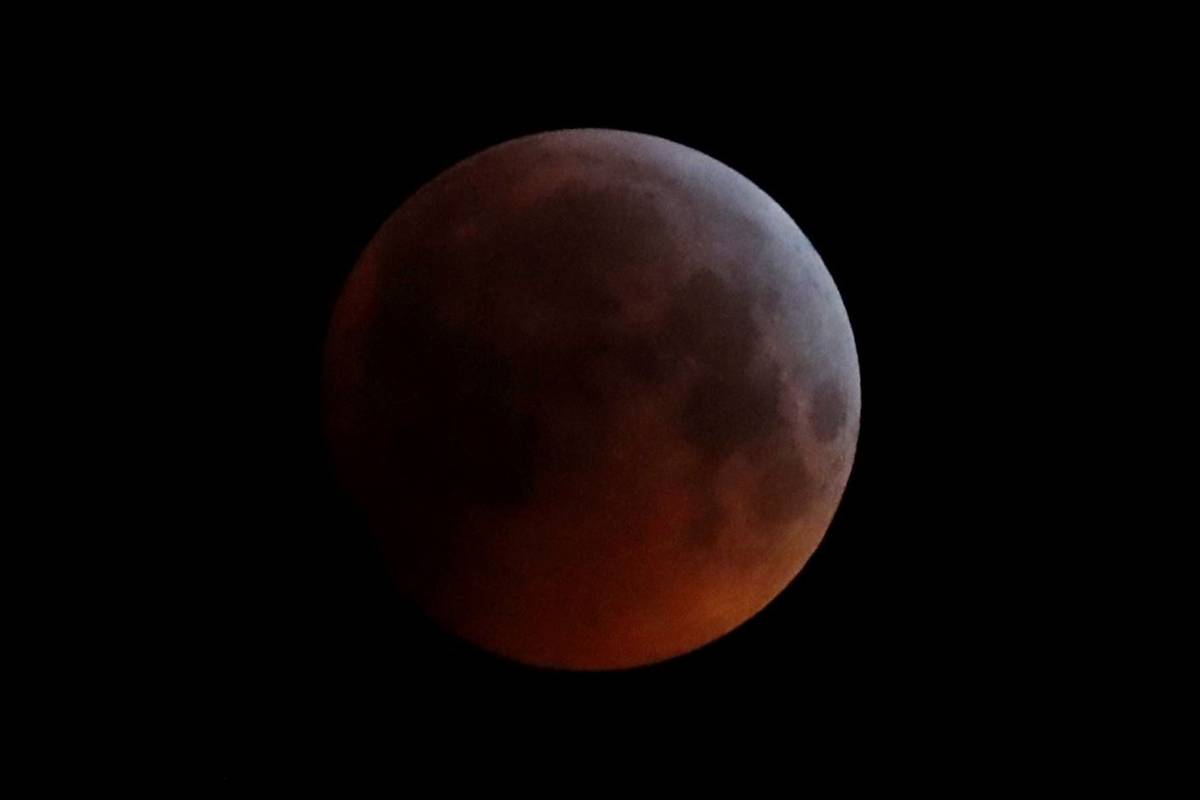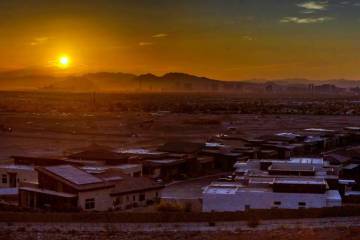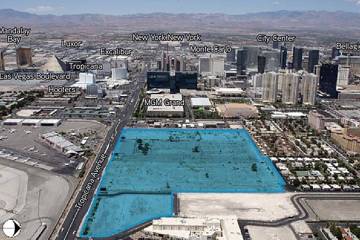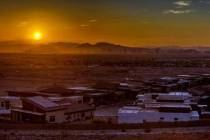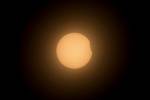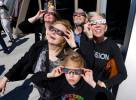Here’s how you can see the super ‘blood’ moon over Las Vegas
CAPE CANAVERAL, Fla. — The first total lunar eclipse in more than two years coincides with a supermoon this week for quite a cosmic show.
This super “blood” moon will be visible early Wednesday morning across the Pacific — offering the best viewing — as well as the western half of North America, bottom of South America and eastern Asia.
In Las Vegas, the event is scheduled to begin at 1:47 a.m., peak at 4:18 a.m. and end at 5:35 a.m.
The total lunar eclipse will begin around 4:11 a.m. Pacific Time and last about 15 minutes. The reddish-orange color is the result of all the sunrises and sunsets in Earth’s atmosphere projected onto the surface of the eclipsed moon.
“By the time sunrise happens, it will be over with,” said Jason Steffen, an assistant professor in UNLV’s department of physics and astronomy.
The name “Super Flower Blood Moon,” Steffen said, is “a lot more exotic than what’s actually happening.”
A full moon in May, he added, is sometimes called a “flower moon.”
George Rhee, a professor in UNLV’s department of physics and astronomy, said he thinks the total lunar eclipse should be “pretty clearly visible” from the Las Vegas area. Even from the Strip, visitors can generally see the moon, he said, but not many stars.
If you want to see the eclipse in all of its glory, Rhee recommends heading out to the desert, or the areas near Lake Mead or Mount Charleston for a better view. But, he said, “you should be able to see it from the city. If you can see the moon from your house, you should be able to see this phenomenon.”
“If you’re willing to get up and there’s no clouds, it’s a natural phenomenon you can see with the naked eye,” Rhee said.
The National Weather Service is forecasting partly cloudy skies Tuesday night with a low around 70 degrees and a sunny day Wednesday.
“Hawaii has the best seat in the house and then short of that will be California and the Pacific Northwest,” said NASA’s Noah Petro, project scientist for the Lunar Reconnaissance Orbiter. New Zealand and Australia also will have prime viewing.
The moon will be more than 220,000 miles away at its fullest. It’s this proximity, combined with a full moon, that qualifies it as a supermoon, making it appear slightly bigger and more brilliant in the sky.
Unlike a solar eclipse, there’s no harm in looking at an eclipsed moon.
“For people who might feel like we’re missing out, set your calendars for Nov. 19 of this year,” Petro said. This will be a nearly total eclipse where the moon dims but doesn’t turn red.
Review-Journal reporter Julie Wootton-Greener contributed to this report.



